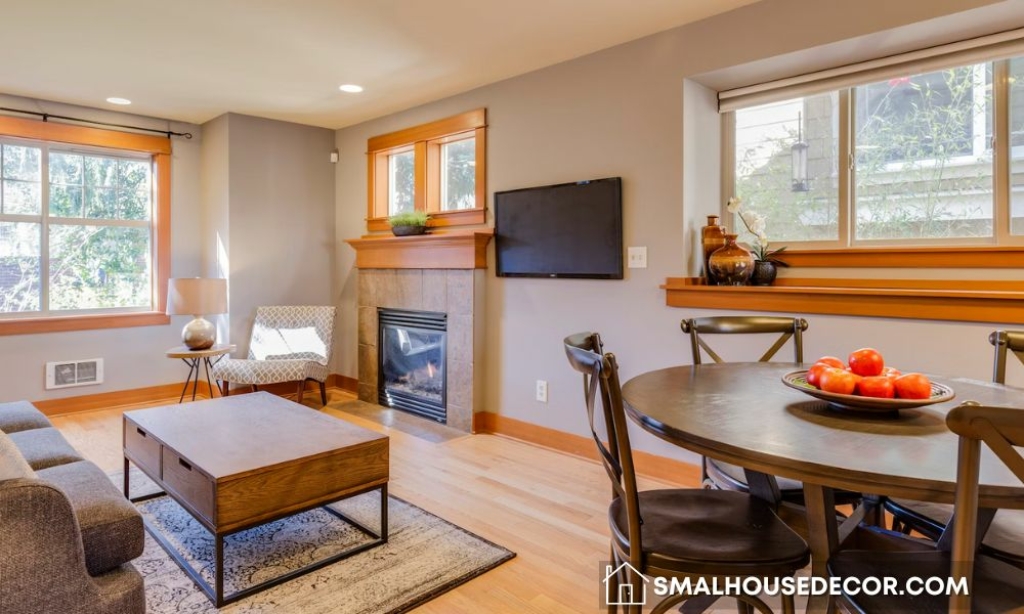Small spaces can be a challenge for anyone, but particularly for those with different needs. Whether it’s due to a disability, old age, or simply the need to accommodate a family, small spaces can make it difficult to move around, store items and perform everyday activities.
Making small spaces more accessible is important not only for the comfort and safety of those who live there but also for their independence and quality of life. In this blog post, we’ll explore some tips and ideas for making small spaces more accessible for everyone’s needs.

Assessing Needs
The first step in making small spaces more accessible is to determine the specific needs of those who will be using the space. This could include individuals with disabilities, elderly individuals, or families with young children. Once you’ve identified the needs of your users, it’s important to prioritize them based on importance and urgency.
For example, if you have a family member in a wheelchair, one of the most critical needs would be ensuring that there are clear pathways for them to navigate throughout the space. On the other hand, if you have young children, you may want to prioritize creating adequate storage space for toys and other items.
Utilizing Space
When it comes to small spaces, maximizing space is key. There are a variety of ways to make the most of your limited square footage, from clever storage solutions to creative furniture arrangements.
One way to create more space in a small area is to use furniture that has multiple functions. For example, a coffee table that doubles as a storage trunk or a sofa bed that can be converted into a guest bed at night. This not only saves space but can also save money on buying additional furniture.
Another way to maximize space is to think creatively about storage. A small closet can be transformed into an office with the addition of a desk and office supplies. Vertical space can be utilized with tall bookshelves or hanging organizers. Additionally, labeling and organizing items in storage spaces can help to keep the area clutter-free and easier to navigate.
Adapting Design
One crucial aspect of making small spaces more accessible is adapting the design to meet specific needs. For example, installing grab bars and handrails in strategic locations can provide extra support and stability for those who need them. Additionally, removing high thresholds and creating ramps or gradual inclines can improve accessibility for wheelchair users.
If you have elderly parents or relatives at home, you can customize your home design to assist mobility. Installing home elevators or stairlifts is a popular strategy due to the space efficiency of these machines. Home elevators can make multi-level homes more accessible, allowing individuals with mobility issues to move between floors with ease. These elevators are becoming more affordable and practical, and their modern designs integrate well into a home’s overall look and feel. They are also a great solution for individuals who want to age in place and remain independent in their own homes.
Incorporating design elements like grab bars, ramps, elevators, or stairlifts can help ensure that small spaces are accessible to people with different needs. These adaptations improve mobility and independence and contribute to an overall sense of safety and security in the home. With careful planning and consideration, small spaces can be transformed into comfortable and functional living spaces that meet the needs of all who use them.
Technology & Innovation
Finally, technology and innovation have made great strides in making small spaces more accessible. There are a variety of assistive devices and products available that can enhance accessibility in a small space.
Smart home technology enables users to control their environment (such as temperature, lighting, and entertainment) with voice commands or remote controls. This can be especially helpful for those who have difficulty moving around or manipulating objects. Voice-activated personal assistants like Amazon’s Echo and Google Home can also be used to set reminders, make phone calls, and perform other tasks without the need for physical interaction.
Innovative products like robotic vacuum cleaners and self-cleaning litter boxes can help to keep the space clean and reduce the amount of physical labor required. Additionally, new building materials and technologies such as touchless faucets and motion sensor lights can be incorporated into the design of a small space to increase accessibility.
Final Words
Making small spaces more accessible for everyone’s needs is essential for ensuring comfort, safety, and independence. By assessing the needs of the users, utilizing space creatively, adapting design elements, and incorporating innovative technology, you can create a space that works for everyone. With the right planning and attention to detail, small spaces can be transformed into comfortable and functional living spaces that meet the needs of all who use them.